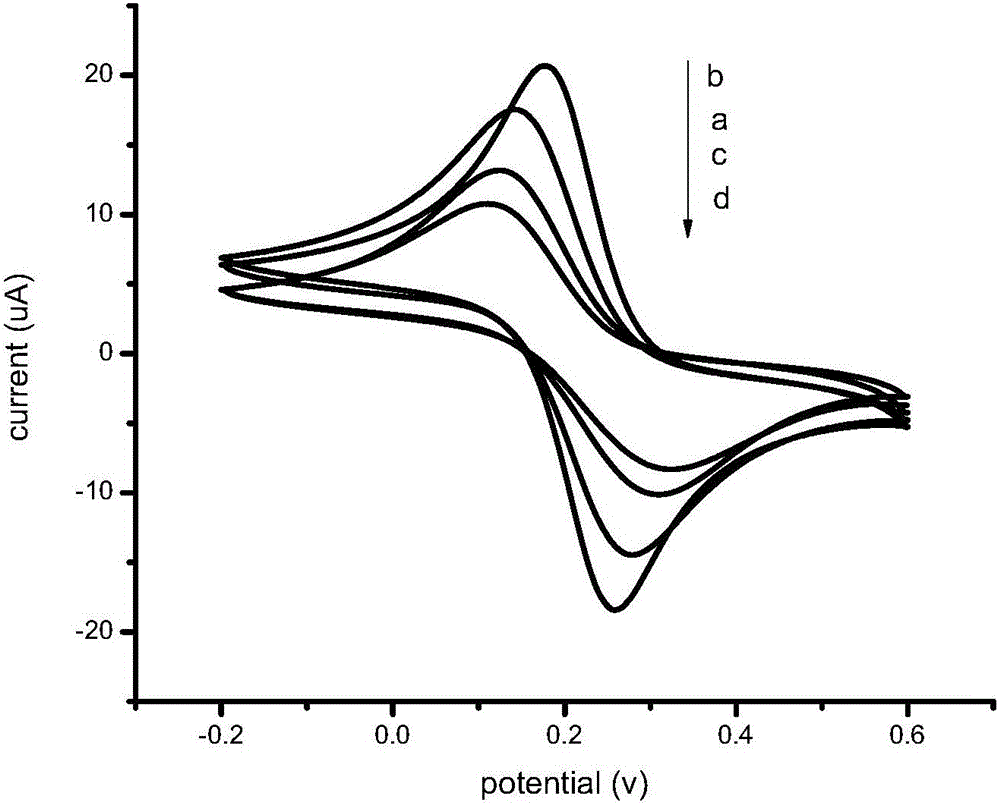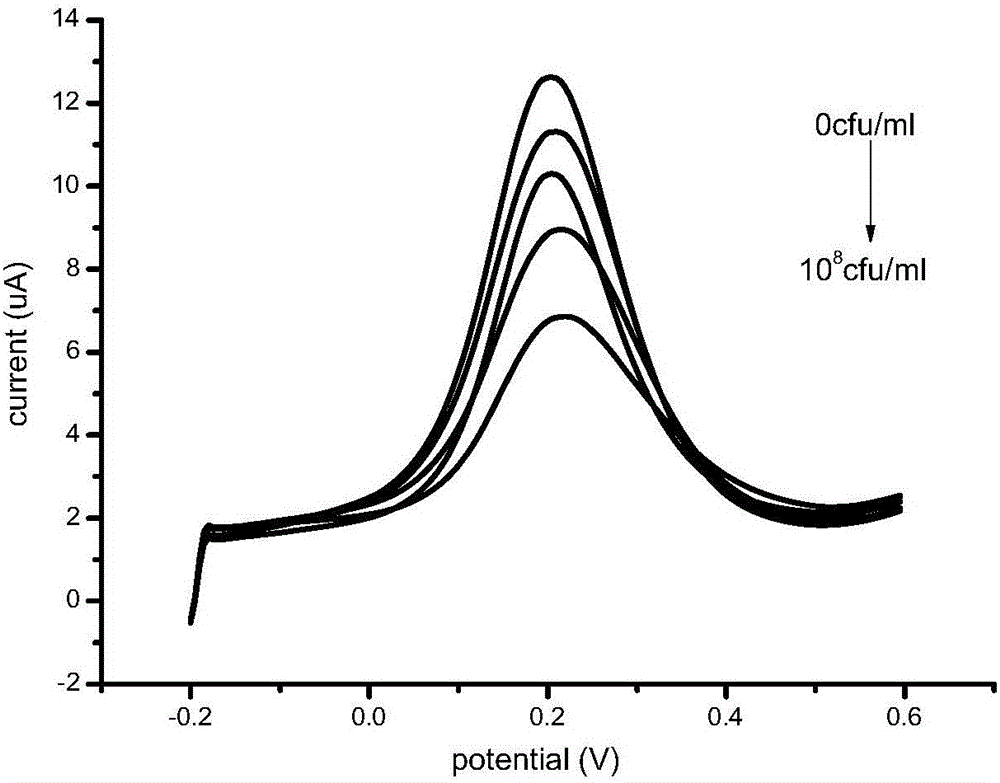Preparation method and detection method of nano immunosensor used for rapid detection of enterobacter sakazakii
A technology of Enterobacter sakazakii and immunosensor, which is applied in the field of nano-immunosensor preparation, can solve the problems of difficult to distinguish results, cumbersome operation, and long time consumption, and achieve the effects of improving detection efficiency, simple preparation, and shortened inspection time
- Summary
- Abstract
- Description
- Claims
- Application Information
AI Technical Summary
Problems solved by technology
Method used
Image
Examples
Embodiment 1
[0028] Detection of Enterobacter sakazakii in milk powder sample I by immunosensing
[0029] 1. Preparation of Immunosensors
[0030] a. Electrode pretreatment
[0031] Polish the glassy carbon electrode with alumina polishing powder to the mirror surface, wash it with distilled water, then use secondary deionized water, absolute ethanol, and secondary deionized water to ultrasonically clean it for 3 minutes to 5 minutes, and dry the glassy carbon electrode with nitrogen . Then, put the phosphate buffer solution with a pH value of 7.0 into the beaker, then add potassium ferricyanide, potassium chloride and hydrogen peroxide to make it 2mmol / L, 0.1mol / L and 0.5mmol / L respectively, Get the electrolyte solution, then insert the reference electrode, the counter electrode and the glassy carbon electrode into the electrolytic cell of the electrolyte solution, connect the PAR270 electrochemical workstation; use the PAR270 electrochemical workstation to perform cyclic voltammetry sc...
Embodiment 2
[0042] Detection of Enterobacter sakazakii in milk powder sample II by immunosensing
[0043] 1. Preparation of Immunosensors
[0044] a. Electrode pretreatment
[0045] Same as Example 1
[0046] b. Preparation of graphene-polyamide-amine composite
[0047] Same as Example 1
[0048] c. Preparation of Immunosensors
[0049] Use a micropipette gun to accurately measure 4 μL of the graphene-polyamide-amine nanocomposite obtained in step b and drop-coat it on the surface of the glassy carbon electrode obtained in step a, dry it naturally or in an infrared dryer at room temperature, and then The surface of the glassy carbon electrode was drop-coated with horseradish peroxidase-labeled Enterobacter sakazakii antibody in the same volume as the graphene-polyamide-amine nanocomposite, and placed in a refrigerator at 4°C for 1.5h to 2h, and then drop-coated The same volume of 1wt% bovine serum albumin solution was treated in a 37°C incubator for 55min to 60min to block the non-sp...
Embodiment 3
[0055] Detection of Enterobacter sakazakii in milk powder sample III by immunosensing
[0056] 1. Preparation of Immunosensors
[0057] a. Electrode pretreatment
[0058] Same as Example 1
[0059] b. Preparation of graphene-polyamide-amine composite
[0060] Same as Example 1
[0061] c. Preparation of Immunosensors
[0062] Use a micropipette to accurately measure 7 μL of the graphene-polyamide-amine nanocomposite obtained in step b and drop-coat it on the surface of the glassy carbon electrode obtained in step a, dry it naturally or in an infrared dryer at room temperature, and then The surface of the glassy carbon electrode was drop-coated with horseradish peroxidase-labeled Enterobacter sakazakii antibody in the same volume as the graphene-polyamide-amine nanocomposite, and placed in a refrigerator at 4°C for 1.5h to 2h, and then drop-coated The same volume of 1wt% bovine serum albumin solution was treated in a 37°C incubator for 55min to 60min to block the non-speci...
PUM
 Login to View More
Login to View More Abstract
Description
Claims
Application Information
 Login to View More
Login to View More - R&D
- Intellectual Property
- Life Sciences
- Materials
- Tech Scout
- Unparalleled Data Quality
- Higher Quality Content
- 60% Fewer Hallucinations
Browse by: Latest US Patents, China's latest patents, Technical Efficacy Thesaurus, Application Domain, Technology Topic, Popular Technical Reports.
© 2025 PatSnap. All rights reserved.Legal|Privacy policy|Modern Slavery Act Transparency Statement|Sitemap|About US| Contact US: help@patsnap.com



